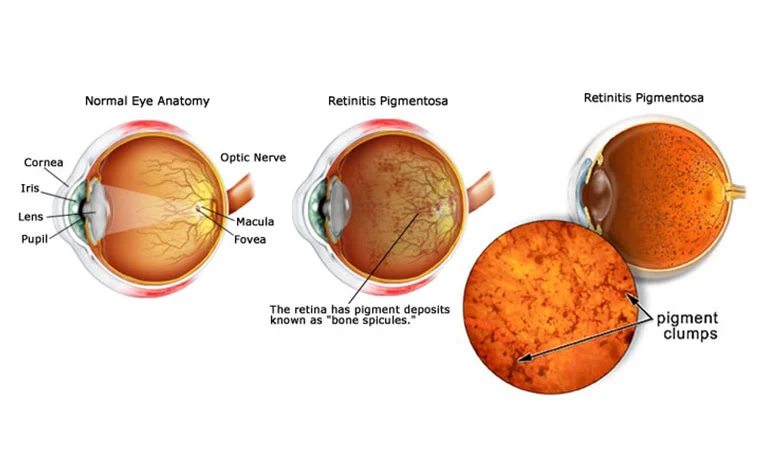
#LIVE2.0 #Review
No other low vision aids offer you a dedicated Retinitis Pigmentosa Mode. Get your 30 days free trial for IrisVision right now!
Get a 30-days risk-free trial for yourself, a patient, or a loved one and find out if IrisVision is the right low vision aid for you.
Our eyes are one of the most sensitive parts of our body and yet the most neglected at getting the proper care. We could be doing things that would have drastic repercussions on our eye health. Losing eyesight can be one of the most traumatic experiences anyone can go through. As sensitive as our eyes may be, the accompanying eye diseases are more complicated.
In light of that, do read these eye care tips, because prevention is always better than cure.
Living with any eye disease is an uphill task. From the rarity and severity of the disease there can be countless challenges. I would be talking about a retinal disease called retinitis pigmentosa, what causes this eye condition, things you could do to better live with it and any possible low vision solutions.
As you may know, retinal diseases come with a lot of variance. By definition, a disease that affects any part of your retina comes under the umbrella of retinal diseases. The Retina is a thin layer of light-sensitive tissue on the inside back wall of your eye. Any damage to this part causes retinitis pigmentosa. Let me elaborate on that.
Retinitis pigmentosa is a chronic eye disease causing a progressive degeneration of the retina leading to loss of sight. It is from a group of rare, genetic disorders that cause the breakdown and loss of cells inside the retina.
When you have RP, cells in the retina called photoreceptors don’t work the way they’re supposed to, and over time, you lose your sight. It usually does not cause total blindness, but there are exceptions.
If RP starts to show in one eye, it is inevitable that over a period of years, the other eye will be affected as well. People with RP experience symptoms like finding it difficult to see at night and loosing peripheral vision (side vision).
There is considerable overlap among the various types of RP. So let’s explore what the different types of RP look like.
Some of the greater known types of RP are:
RP is a hereditary disorder. That means you get it from your parents.
What happens is, when genes mutate, some mutations result in harmful changes. Among a lot of other things, our genes carry instructions for making proteins needed in the cells within the retina, called the photoreceptors.
These harmful changes or mutations can be different. Some mutations result in the gene not making the required protein, hence limiting the cell’s function.
Some mutations result in the production of a protein that is toxic to the cell. Sometimes an abnormal protein is produced that doesn’t function properly. In all these scenarios, the photoreceptor cells take the damage which inevitably leads to retinitis pigmentosa.
The onset of symptoms mostly shows in early teenage or childhood. If symptoms show in adulthood or a later stage, the disease progresses comparatively slowly.
Symptoms start by an increased difficulty to see at night, termed loss of night vision. It may progress to a loss of peripheral vision, central vision and color vision as well.
Fortunately, significant visual loss may not occur until later in life. However there are rare cases of people experiencing total blindness.
Let me elaborate on the types of vision losses I mentioned above.
There are various tests and eye exams used to diagnose Retinitis pigmentosa:
Although there have been various comprehensive researches conducted on a cure for RP, but at the moment there is no cure for retinitis pigmentosa.
Not to dismay, research shows that taking certain vitamins, preferably vitamin A, may help fight with retinitis pigmentosa.
However, before you opt for anything of the sort, consult with your ophthalmologist. It is important to know the amount and type of vitamin you need. Taking the wrong vitamins can be harmful for health.
Life can be difficult and challenging, living with retinitis pigmentosa. There are certain low vision aids that can help anyone learn make the most of their remaining sight.
Depending on the severity of this condition, you can use visual aids like hand held magnifiers, CCTV based low vision aids, screen readers and countless other wearable low vision aids. Vision specialists can teach you to use these tools and techniques, so you don’t have to go through at it alone.
If you are looking for a more long term solution, you could always go for IrisVision. A low vision wearable headset helping people with various eye problems like retinitis pigmentosa, macular degeneration, glaucoma and more. Learn more about IrisVision.
Other than visual aids, you can opt for a walking cane or even a guide dog. You will feel the difference immensely.
You can choose how to live with low vision condition. You either let the fear, pain and feeling of despair cripple you or you can take charge of your life, and be an inspirational story for someone else fighting with a low vision condition.
Support
See and Connect Today!
IrisVision Global, Inc.
5994 W. Las Positas Blvd, Suite 101
Pleasanton, CA 94588
Email: [email protected]
Support: +1 855 207 6665
Support
See and Connect Today!
IrisVision Global, Inc.
5994 W. Las Positas Blvd, Suite 101
Pleasanton, CA 94588
USA Email: [email protected]
Support: +1 855 207 6665
Support
See and Connect Today!
IrisVision Global, Inc.
5994 W. Las Positas Blvd, Suite 101
Pleasanton, CA 94588
Email: [email protected]
Support: +1 855 207 6665